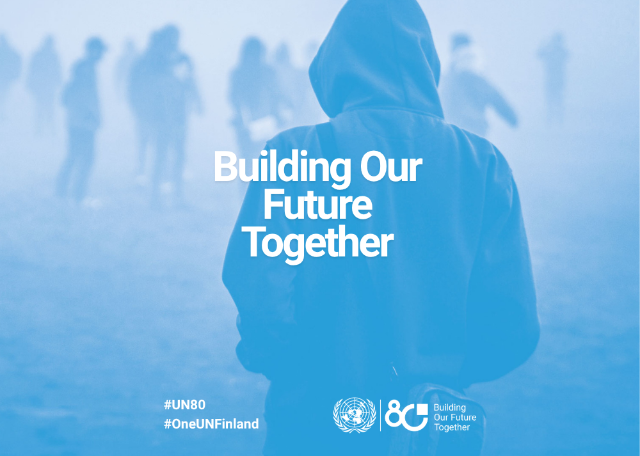Held on 20 May 2025 during the 34th session of the UN Commission on Crime Prevention and Criminal Justice (CCPCJ), the event addressed the escalating concern of youth involvement in organized crime within the Nordic and Baltic regions as well as the responses by the criminal justice systems, considering both the developmental stages of the youth involved and the complex, transnational nature of the criminal networks. The event aimed to enhance understanding and inform effective policy responses to this pressing issue.
Brian Lee, Head of Programme, Observatory of Illicit Economies in Eurasia, Global Initiative Against Transnational Organized Crime (GI-TOC) shared recent research findings on the phenomenon, addressing the growing connection between organized crime and youth recruitment, highlighting the critical role social media plays in this dynamic. He noted how criminal groups are increasingly recruiting young individuals, particularly through social media platforms, to participate in illicit activities such as drug trafficking and cross-border violence. Lee emphasized that criminal groups are increasingly exploiting game-like activities and interactive online environments to attract and engage young people. These groups communicate in ways that resonate with youth culture, making their recruitment strategies both persuasive and difficult to counter. Lee's insights underscore the urgent need for targeted prevention efforts.
Britt Østergaard Larsen from The Danish Center for Social Science Research (VIVE), talked about the effects of system responses to minors involved in crime. The presentation critically examined Denmark’s punitive shift in juvenile justice policy over the past 35 years, contrasting it with the traditional “Nordic exceptionalism” model that emphasizes child welfare and high minimum ages of criminal responsibility (MACR). While countries like Norway and Finland still rely more on locked child welfare institutions and relatively high MACRs, Denmark has introduced stricter sanctions for 10–17-year-olds.
Östergaard described a policy reform in Denmark (2010–2012), where the MACR was temporarily lowered from 15 to 14. Using a quasi-experimental design, researchers found no evidence that this reform reduced crime among 14-year-olds. On the contrary, reported crimes increased, particularly among those with prior offenses.
Östergaard noted that criminal justice involvement often worsens outcomes for youth compared to diversion or “doing nothing”. It is known that juvenile prisons are linked to higher adult crime rates and poorer educational outcomes. Instead, alternative measures, like electronic monitoring, show positive effects on recidivism, education, and employment. The findings highlight important policy implications as the ‘tough-on-crime’ motivated reform did not have the intended crime-reducing effects.
The presentation by Anna-Liisa Uisk, Head of Development and Crime Statistics Division at the Estonian Ministry of Justice and Digital Affairs, focused on Estonia's youth justice reform efforts. The reform emphasizes a multidisciplinary, child-centered approach, aiming to reduce punitive responses and enhance early intervention and individualized support for young offenders. It promotes strong cooperation between justice, social welfare, health, and education sectors to provide comprehensive assistance to at-risk youth.
Early results are promising: recidivism is under 30% for juveniles diverted in pre-trial proceedings, compared to nearly 80% for those previously released from prison. Currently, about 75% of juvenile criminal cases are resolved during pre-trial proceedings, and the number of juvenile offenses has decreased by nearly 25% over the past five years. The reform will continue in a project called Reducing recidivism among young offenders”, focusing on a population from 14-29 years.
In her talk Understanding and Responding to Youth Gang Involvement in Sweden, Christine Namdar, visiting scholar at the University of Helsinki, a Doctoral Researcher at Åbo Akademi University, and a researcher with the Community Lab at the Harvard Graduate School of Education, Namdar described what she called the Swedish Paradox. Sweden, known for its progressive welfare state and being the first country to ban corporal punishment of children (1979), faces a paradox: despite strong material well-being, youth gang violence is rising, especially among second- and third-generation immigrants. Systemic changes—such as education decentralization, police centralization, and demographic shifts—have contributed to growing feelings of alienation among youth. Insights from interviews reveal that frequent relocations, fractured family structures, and lack of educational support contribute to a sense of loneliness and disconnection. Gangs exploit this by recruiting underage youth. Former gang members emphasized the need for meaningful engagement, belonging, and challenges in life. She noted the need for a Relocation-Based Transformation Model -a geographical, social, existential, and ideological shifts supported by entrepreneurial and community efforts - as a path to prevention and positive identity formation. It recommends a move from merely preventive to promotion-oriented education, focusing on creating purpose and connection.
Organised by HEUNI and GI-TOC. With support of Finland, Sweden, Norway and Denmark.





